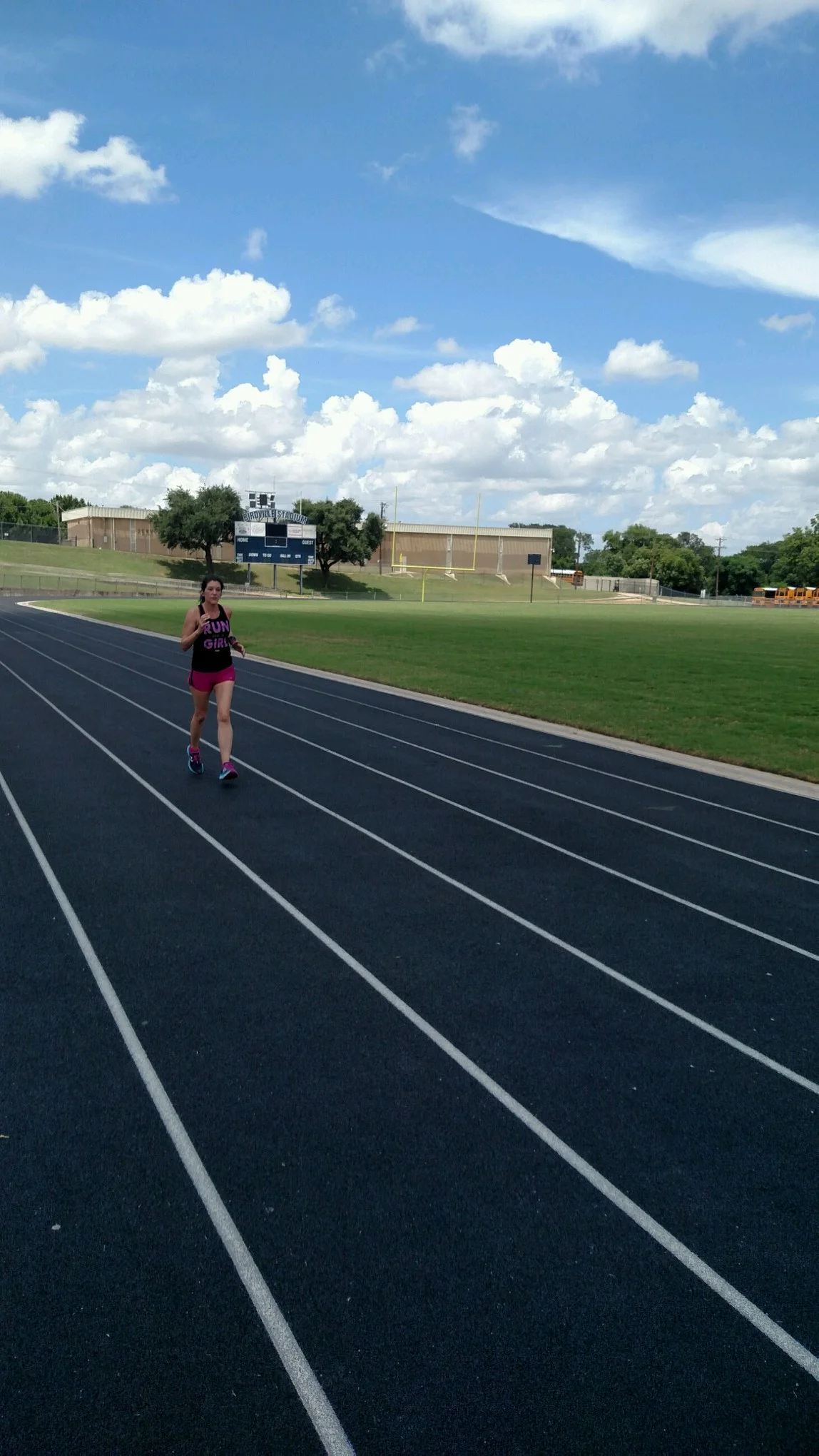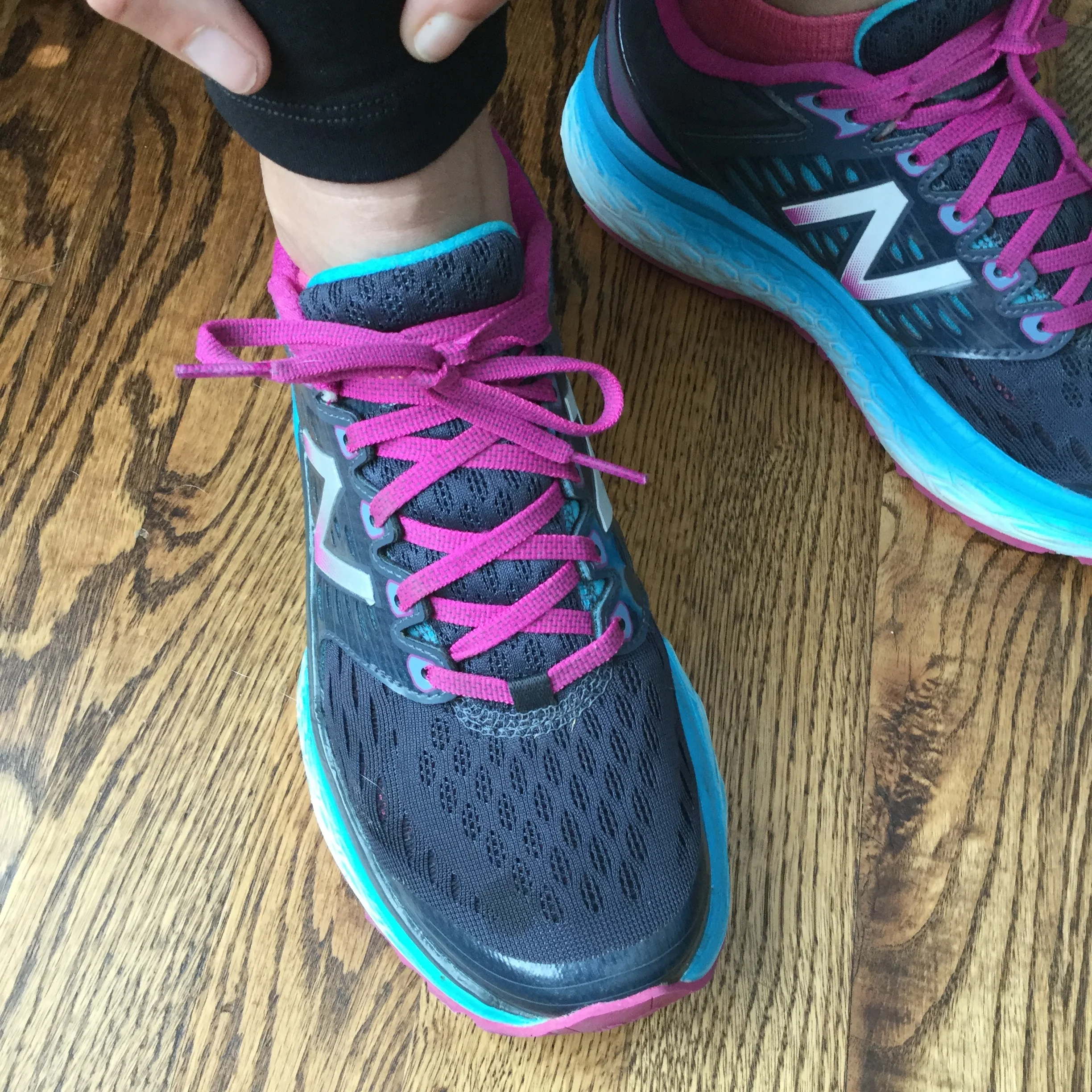Hi, friends. Welcome to another edition of Running A to Z. Each week I cover a running related topic following the order of the alphabet. This week we are on letter P. P is for pacing, how to find your perfect running pace. If you missed any Running A-Z posts you can catch up on letters A-O in the archives.
Pace seems like something you shouldn't have to think about. Strap on your shoes and hit the streets. The average time it takes you to move through each mile is your pace. But in order to run most efficiently you don't want to start off too fast for your abilities or your goals. It's the biggest mistake I see in new runners. It not only makes for a poor running experience, but you risk burnout and injury. So how do you find your perfect pace? You'll need to determine the appropriate pace for easy runs and for speed work.
P is for Pacing
CONVERSATIONAL PACE
I am a big fan of running according to how you feel because you don't need any fancy equipment like a GPS watch or treadmill. You run by feel, your rate of perceived exertion (chart below) and the talk test. Conversational pace is exactly what it sounds like, it's the pace you can maintain while holding a conversation without pausing to gasp for air between words or sentences. On the RPE chart (below) this would be between a 4-6 on a scale from 1-10.
RPE = Rate perceived exertion
As a running coach I recommend that most of your runs (especially your long runs) should be at this pace. There is room for speed work and hard workouts in the week, but you have to give your body adequate time (usually 48 hours, but depends on the athlete) to recover in between hard sessions. Run easy enough on easy days to allow your body to recover.
5K PACE
A lot of runners want to train to run faster. Some training plans that are designed to increase speed are based on your current 5K pace. The example below is adapted from the RRCA Pace Chart developed by Amby Burfoot (www.ambyburfoot.com). The chart gives you the appropriate pace to run different types of speed workouts based on your current fitness level (your 5K time). For example, if you currently run a 5K in 29 minutes (or a 9:21 pace) then your tempo pace should be 9:49, your long interval pace 9:10 and your short interval pace 8:25. If you try to run faster you could risk injury. It is important to reiterate that the 5K pace on the chart is your current pace, not your desired pace. If you currently run a 5K in 33 minutes but want to improve your time to 29 minutes, you would follow the paces on the first line, not the middle line. You always train to your current fitness level, not your desired level. Once your 5K time improves you can then increase your speed workout paces.
| 5K PACE | 5K TIME | EASY & LONG RUN PACE | TEMPO PACE | LONG INTERVAL PACE | SHORT INTERVAL PACE |
|---|---|---|---|---|---|
| 10:48 | 33:30 | 13:24 | 11:20 | 10:35 | 9:43 |
| 9:21 | 29:00 | 11:36 | 9:49 | 9:10 | 8:25 |
| 8:13 | 25:30 | 10:22 | 8:43 | 8:03 | 7:24 |
The best way to determine your 5K pace is to run a 5K. If you never ran an organized 5K race, you can map out a 3.1 mile course on the street (choose a flat route), on a track or on a treadmill. Run your 5K at a comfortably hard pace, about a 7 on the RPE chart. You should be working hard but not an all-out effort (because you won't be able to maintain it for three miles).
If you would like help with a running plan, I can put together a workout schedule for you that safety and systematically increases distance and speed over time based on your current fitness abilities. Check out my run coaching services for more details.
The main lessons to learn are to run your easy runs at conversational pace and run your speed workouts based on your current fitness levels, not your desired fitness level. If you train at the correct paces and master these two concepts you'll run longer and faster with little risk of injury or overtraining.
Any questions about pacing? I'd love to help. Let me know in the comments.
Like this post? It helps me when you share!
I am a NASM personal trainer and RRCA adult distance running coach that specializes in strength training for runners. I offer in-person training in the Shredshed, online training and Fit to Run bootcamps. If you are interested in a more in-depth running or strength training plan, please contact me. Have questions? I'd love to help.
While I am a certified personal trainer, I am not your personal trainer. Since I don't know your exercise abilities, injury background or medical history, please see your doctor before beginning any new exercise program.













